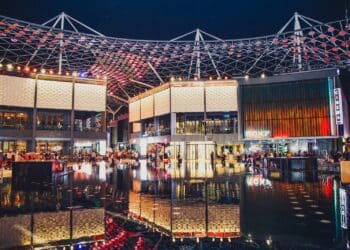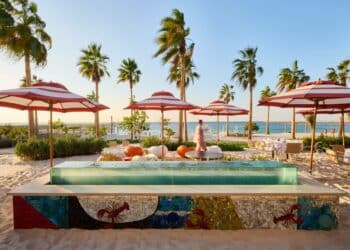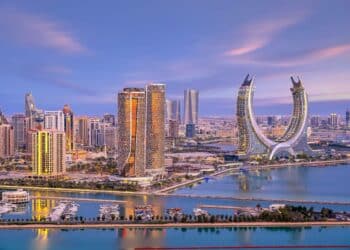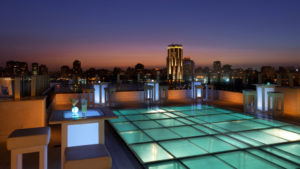
The Middle East is a region accustomed to political turmoil and instability and some of its most popular business and tourism destinations demonstrate a remarkable resilience in the face of adversity.
From terrorism attacks to civil war, countries in Northern Africa and the Levant in particular have suffered repeated setbacks, but they have also proved their ability to bounce back against all odds.
The revolutionary impact of the Arab Spring has caused shockwaves throughout the region since 2011, dampening the performance and development of many hotel markets.
Yet 2014 marked the start of another recovery phase, with markets such as Egypt, the king of comebacks, witnessing an upswing in fortunes. Confidence has returnedfollowing a marked period of political stability under President Abdel Fattah El-Sisi and Egypt is back on both the tourism and investment maps.
The Bahrain market has picked up too, with positive investor sentiment re-igniting the hotel pipeline and speeding up property openings.
Inklings of market recoveries are also evident in Lebanon, Jordan, Kuwait and Abu Dhabi to varying degrees.
However, analysts such as Aranca’s associate vice president, PrabirChetia, note the Middle East hotel market’s overall performance remains “significantly below pre-recession levels in both nominal and real terms”.
Citing STR Global data,he says: “In November 2014, the region reported a 4.8% year-on-year increase in occupancy to 67.4%, a 2.4% decrease in average daily rate (ADR) to US$174.28 and a 2.3% increase in revenue per available room (RevPAR) to US$117.40.”
He says a number of global factors will play havoc with the region’s hotel industry performance in 2015 with the collapse of the Russian Rouble already impacting the sector.
“Hotels in the Middle East, particularly in Egypt and the UAE, are struggling to find ways to keep business flowing from Russia, which is a key tourism market,” he says.
Philip Wooller, Middle East area director, STR Global, says diminished tourism and investment flows from Russia, combined with plunging oil prices could “create financial challenges across the Middle East”.
“As a consequence, some larger projects could be put on hold that could impact the hotel business,” he says.
ButHalaMatarChoufany, regional director, HVS Global, argues the major challenge for most of the region’s hotel markets over the next two years will be excess inventory.
“I think 2015 and 2016 will see slow growth in all sectors due to oversupply and aggressive development plans, which will be further amplified by global factors,” she says.
“Demand won’t catch up until 2017.”
EGYPT
Egypt experienced a “challenging first half” in 2014 due to the “unstable domestic situation”, says Chetia. Tourism revenues over this period slumped 25% to US$3 billion, compared to the same period the previous year.
“However, in H2, 2014, the economy and the tourism sector witnessed gradual improvements,”he says,
“The increase in corporate demand in Cairo was a driving factor for the sector stability.”
He notes that in August 2014, the Egyptian capital’s tourism revenues increased 220% year on year.
STR Global’sMiddle East area director, Philip Wooller, stresseshowCairo reported a “substantial occupancy growth” of +122.8% in Q3, 2014 as the political environment became stable and tourism returned.
“However, occupancy was still below 50% at 46.6%, so there is still some growth to be had before it reaches pre-crisis levels,” he says.
“Cairo remains a good value-for-money destination, with continued low rates contributing to the occupancy growth. Nonetheless, rates have increased by 13.1% on a year-over-year basis.”
Wooller also highlights Hurghada’ssignificant 52.5% occupancy increase of 52.5% with an “even lower ADR than other parts of Egypt”.
He believes Egypt’s current hotel market pick up is “promising”.
“The economy is recovering, general country stability is more evident and travel advisories are being lifted,” he argues.
GCC tourism to Egypt is playing a significant role in boosting inbound arrivals, says HalaMatarChoufany, regional director, HVS Global Hospitality Services.
“A lot of Saudis travelled to Egypt this summer (2014) because it’s become safer and quieter,” she says.
“There is also a lot of support from the UAE, with one investment firm [HVS is working with] looking to pump AED 50 billion in Egypt’s hospitality industry.
“It’s always been an investment market for the GCC and the combined efforts of the Egyptian Government and its GCC supporters will help in Egypt put its tourism industry back on track.”
Aranca rates Egypt’s rebound status as ‘medium’ says Chetia.
“Egypt is by no means wholly stable; however, tourist numbers are expected to rise by upto 10% and recover to pre-uprising levels of 14.7 million visitors by end of 2015,” he says.
“The Russian market, Egypt’s biggest tourism influx source, is expected to see a cumulative increase of 38% from 2014 to 2018 and forward hotel bookings have increased, driving the sector on its way to recovery in 2015.”
Dangers threatening the rebound, he adds, are “Islamic State-inspired militants operating in the chaos of a post-Gaddafi Libya who are seeking to topple the Cairo government”.
PULL OUT STAT FOR EGYPT:122.8%
Cairo’s occupancy growth in Q3, 2014 (STR Global)
…………………………………….
BAHRAIN
“After a challenging half decade starting in 2009, the relative stability experienced by Bahrain during recent months has allowed hoteliers to record a strong growth in revenues in 2014 compared to last year,” explains Chetia.
“In October 2014, total revenue per available room (TRevPAR) increased by 17% to $194, the highest level in the past two years.”
He says 2014 witnessed tourist arrivals increases, driving up occupancy rates.
Occupancy growth YTD September 2014 was 16% higher compared to the same period in 2013, he notes.
Choufany says Bahrain, like Egypt, is benefitting from the return of Saudi visitors and a “pick up in corporate business too”.
Bahrain’s hotel pipeline is also healthy, she says, citing STR Global’spipeline growth forecast for the kingdom of 42%, with 3,537 rooms under contract. This compares to the current inventory of 8,422 rooms.
She highlights the upcoming opening of “the Four Seasons at the upper end, ibis at the lower end, plus properties from Rotana”, as evidence of industry confidence in Bahrain.
But Chetia “further increases in hotel room supply are expected to keep Bahrain’s stabilised occupancy levels slightly below their 10-year rolling average of 63.5%”.
Nikola Kosutic, research manager, Euromonitor International, says tourism growth prospects for Bahrain are good, predicting a Compound Annual Growth Rate (CAGR) of 4% to 3.5 million trips by 2017, “driven by the completion of new travel and tourism infrastructure and increased investments by the Ministry of Culture in promoting the destination internationally”.
“Bahrain will remain mostly attractive to Saudi Arabians, who will account for 2.3 million out of the total 3.5 million trips taken in 2017,” she says.
BOXOUT FOR BAHRAIN: 42%
Bahrain’s pipeline growth representing 3,537 rooms under contract (STR Global)
LEBANON
Analyst opinion on Lebanon’s status as a recovering hotel and tourism market are divided.
“Lebanon seems to be recovering,” says Wooller. “Perhaps it is still a little fragile but, as a hugely desirable destination, tourists are returning.
He says October 2014 year-to-date data showed occupancy rates increased by 1.5% to 48.6%, “so there is still a significant amount of room for additional growth”.
Choufany says Arab visitation to Lebanon is limited given the country’s borders with Syria remain closed.
“There has been a movement in arrivals, but this doesn’t necessarily translate into room nights because rather than tourists, it’s the Lebanese returning home,” she argues.
Tourism arrivals to Lebanon declined 19% year-on-year in 2014 due to unrest in neighbouring Syria, adds Chetia, quoting UNWTO figures.
“Hotel reservations dropped by 13% compared to 2013 and occupancy rates at the end of 2014 stood at below 55%,” he continues.
Hotels suffered a 5% dip in profitability as they were forced to cut their room prices by 50% to attract tourists.
But on a positive note, he points to occupancy improvements in H2, 2014, as tourist arrivals increased 5% after Saudi Arabia lifted its travel ban on Lebanon in June 2014.
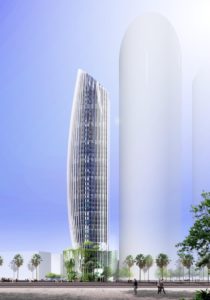
“Sector growth seems positive for 2015 and Lebanon is expected to benefit from a greater influx of tourists if the domestic security situation remains stable, especially when compared to the low tourist turnout in 2014 during a streak of suicide bombings and internal clashes,” Chetia concludes.
Kosutic adds: “As soon as the situation is resolved in Syria, and travel bans are removed, tourists from Gulf countries will quickly return to Lebanon in the same numbers than they did before. This has been the case in all previous Lebanese conflicts. The only potential issue is that for now, tourism to other regional destinations will increase, and some, such as Turkey, easily have the potential to replace Lebanon as a Gulf tourist favourite.”
BOXOUT FOR LEBANON: 48.6%
Lebanon’s occupancy rate in October 2014, up 1.5% y-o-y (STR Global)
JORDAN
Jordan’s 2015 prospects are also a topic for hot debate.
Chetia stresses the country’s improved tourism sector performance in 2014, with visitor revenues up 10% year on year to US$3.5 billion.
He says the promotion of Jordan as a religious destination drove y-o-y increases in visitor number to Jerash (19%), Karak (15%) and Madaba (15%).
“By 2015, Jordan plans to increase the number of international visitors (currently around 8.2 million) to 9.4 million,” he says.
Tourism receipts for 2016 are forecast at US$5.9 billion, Chetia adds.
But Choufany views Jordan as a “struggling market”, stressing that while Amman’s hotel industry has witnessed improvements, unrest in neighbouring Syria is causing market stagnation in general.
She says Jordan needs to emulate Egypt’s strategy by pumping cash into tourism promotion initiatives.
Kosutic agrees: “Despite having rather ambitious plans for the development of tourism, Jordan’s marketing budget for the sector is still limited and would have much to gain from more promotions and advertising activities,” she says. “Exposure is limited in terms of the number of countries targeted, and outreach for potential tourists is also restricted.”
But she points to Aqaba in the south as a potential success story over the next few years, thanks to “significant economic growth” driven by infrastructure investment in the city.
“The Aqaba Special Economic Zone is the authority in charge of the development of the area and is allocating 50% of its investment to the travel and tourism industry,” she notes. “There are cruise facilities being developed, and the city as a whole is being promoted as a stand-alone destination for tourism, independently from the rest of Jordan.”
BOXOUT FOR JORDAN: 3,488
The number of rooms under contact in Jordan (STR Global)
ABU DHABI
Wooller says occupancies in Abu Dhabi are nudging up as demand starts to catch up with excess hotel supply and are now hovering around 73%.
“There is still a lot of pressure on the rates, as new supply continues to come into the market (+10.7% October YTD), so rates have dropped by -5.0% on a year-over-year basis,” he says.
However, “intriguing new projects” such as The Guggenheim and Louvre museums plus the “further development of Yas and Saadiyat Islands will all help to secure the long-term future of Abu Dhabi’s hotel industry”, he argues.
“RevPAR was up 5% in November YTD data to $384.01, predominantly driven by occupancy growth,” he says.
“The one area that could be a concern is the sliding price of oil, which will certainly impact GDP and make balancing the books a little more difficult,” Wolller concludes.
BOXOUT FOR ABU DHABI: 5%
Abu Dhabi’s YTD RevPAR growth for November (STR Global)
Christian Grage, vice president of operations, Arabian Peninsula, Hilton Worldwide

Egypt
“In Egypt, where we operate 18 hotels, with a further five in the pipeline, we continue to support government and private sector initiatives to attract visitors. In the last months of 2014, we saw avpositive impact on trading following a sustained period of political stability in the country, as well as the easing of travel restrictions from many important source market countries, including Germany – all of which has contributed to an uptick in visitors. In 2015 we will open the Hilton Alexandria Resort, which we believe will set new heights among upscale resort offerings in Egypt.”
ROTANA
Omer Kaddouri, president & CEO, Rotana

Bahrain
“We opened ART Rotana Bahrain in 2014 and BanaderRotanain the first week of January, so we have one of the biggest inventories in the kingdom (across three properties). Business is coming inlocally, from Bahrain, as well as Saudi, the GCC and Europe and while a lot of guests are corporate, often from the financial sector, more is being done to attract leisure tourism.”
Jordan
“We opened our first property in Amman on October 1 (Boulevard Arjaan by Rotana, Amman, Jordan). It’s a new product for Amman, so we believe we will reach our market share within the first year of operation. Jordan does get hammered a lot but so far [during the Syria and Iraq crisis] it is hanging in there and holding its own. Our second property in Jordan, Amman Rotana, will open this year.”
Egypt
“We are seeing business improve dramatically at our property in Sharm – it’s up 30% year on year – with increasing business coming out of the UK, Germany and Russia as more airlines fly there again. With the new government there seems to be a confidence that wasn’t there before and the general pipeline of hotels planned for Cairo looks quite strong.”
AvsarKoc, regional director of sales & marketing India, Middle East & Africa, Kempinski Hotels
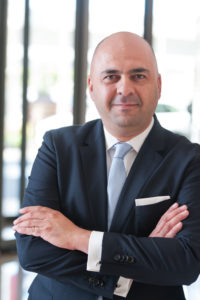
Egypt
“We opened Kempinski Nile Hotel in the summer of 2010 in the best part of Cairo, right on the banks of the Nile. Just a few months later the GM and the staff were on lock down in the hotel as protesters filled the streets on their way to Tahrir Square, which is less than a kilometre away. But Egypt is Egypt – it has always been, and always will be a great tourist destination.
After the Arab Spring the destination struggled to attract a steady stream of visitors, but the Egyptian Tourism Board has done a fantastic job to reach out to travellers with its advertising campaigns in times of trouble and its recent ‘We miss you’ campaign was all over billboards in Dubai just in time for last year’s Eid Break.
We saw a significant increase in visitors from the GCC in the second half of 2014 and expect a steady increase in guests again this year. We are confident in the long-term resilience of the destination and are preparing to open our second hotel in Cairo later this year, which will be our third hotel in Egypt.”
Lebanon
“A market Kempinski is optimistic about in the long term is Lebanon. While it is experiencing a slower rebound compared to Egypt, we believe in what Lebanon has to offer as a destination and we are re-opening a well-loved resort in Beirut later this year, Kempinski Summerland Hotel & Resort. Travellers from the region love the destination, and have been returning in greater numbers in the past 12 months. There is also a steady flow of the Lebanese diaspora who come to visit family and friends, and one of our biggest markets is actually the local population. If there is one thing you can count on, no matter what happens in the region it’s thejoie de vivre of the Lebanese. This makes them a key market for us and will draw them to our property where they can enjoy our restaurants, spa, and the best beach club in Beirut.”

